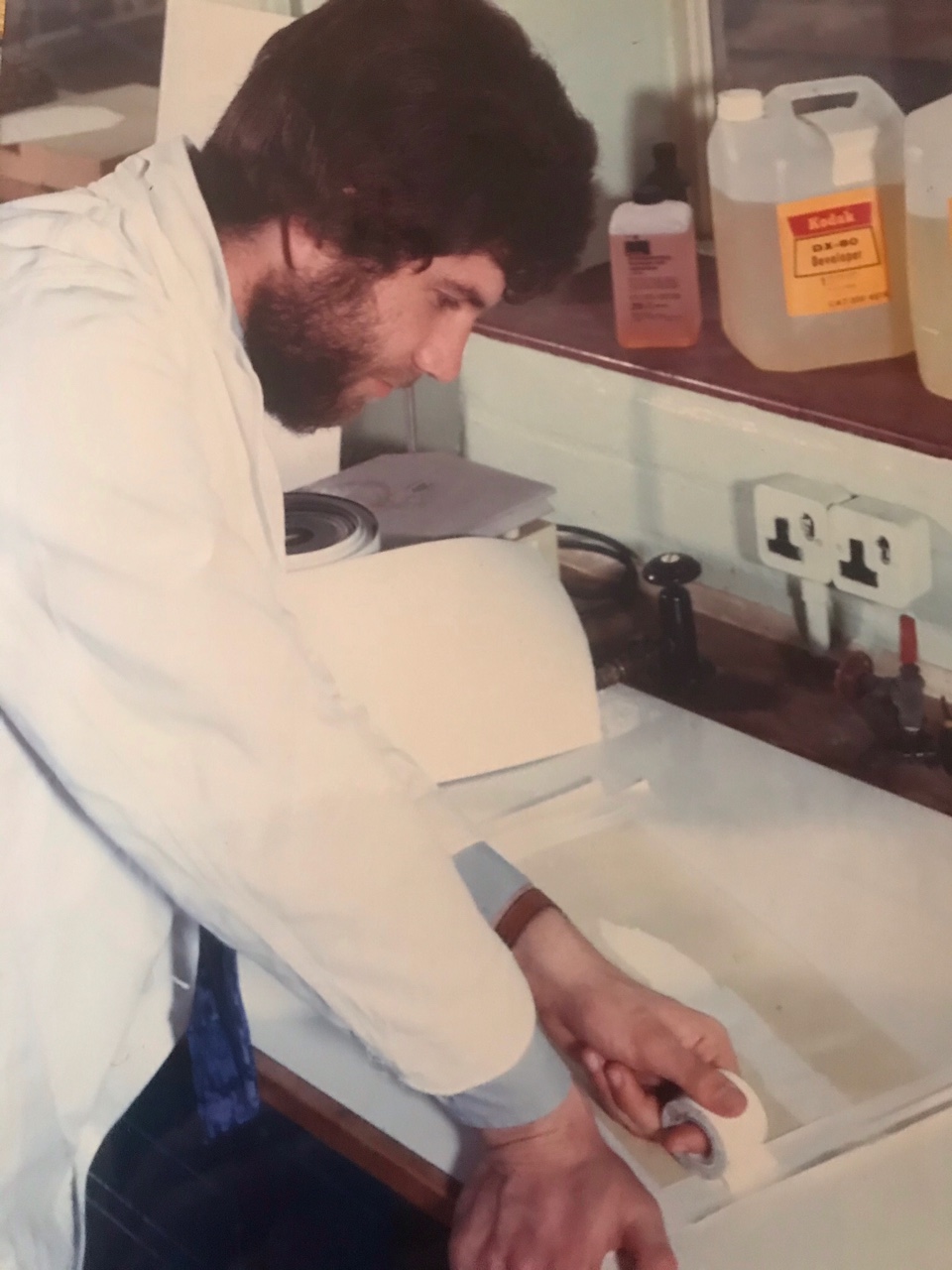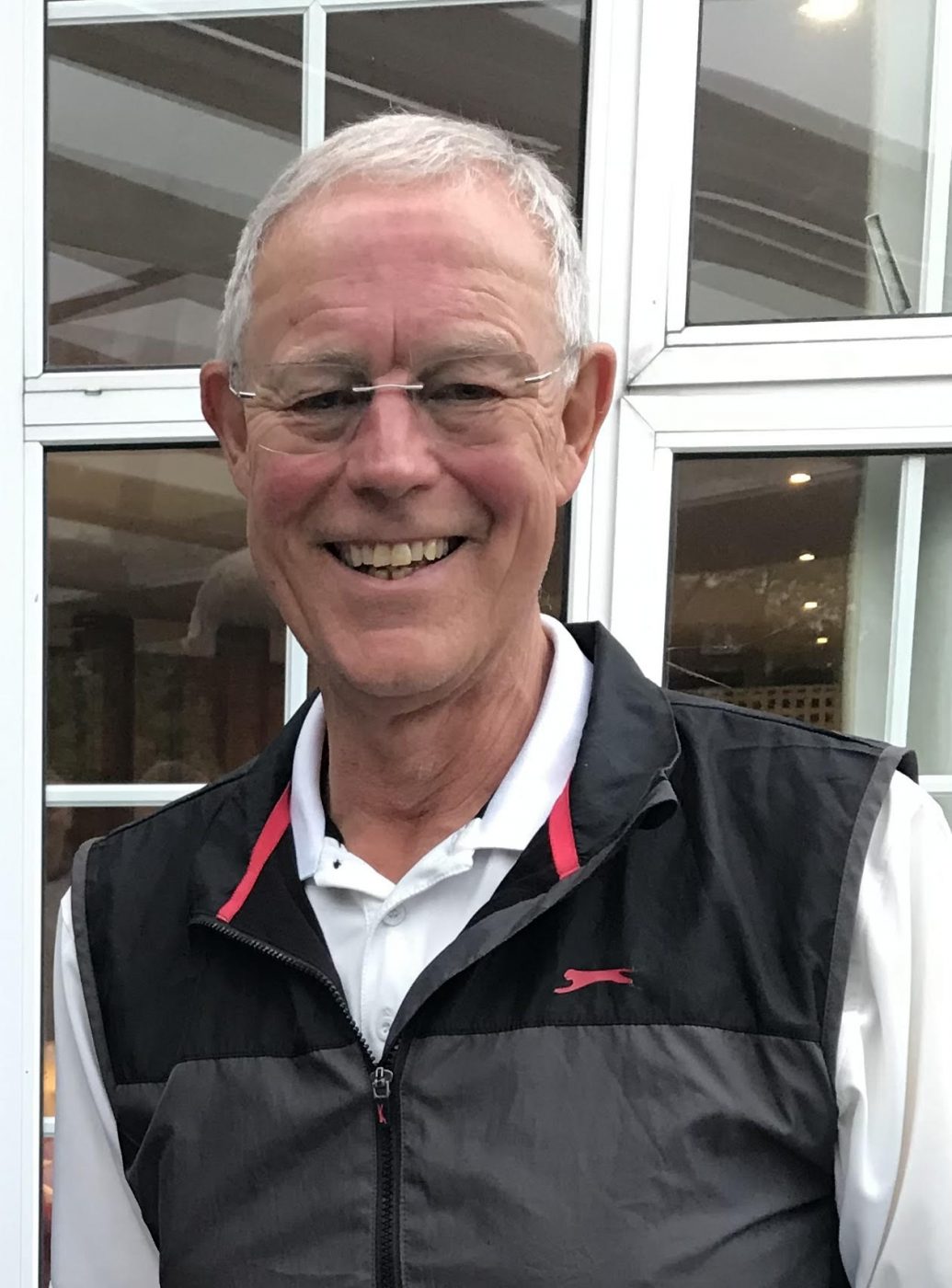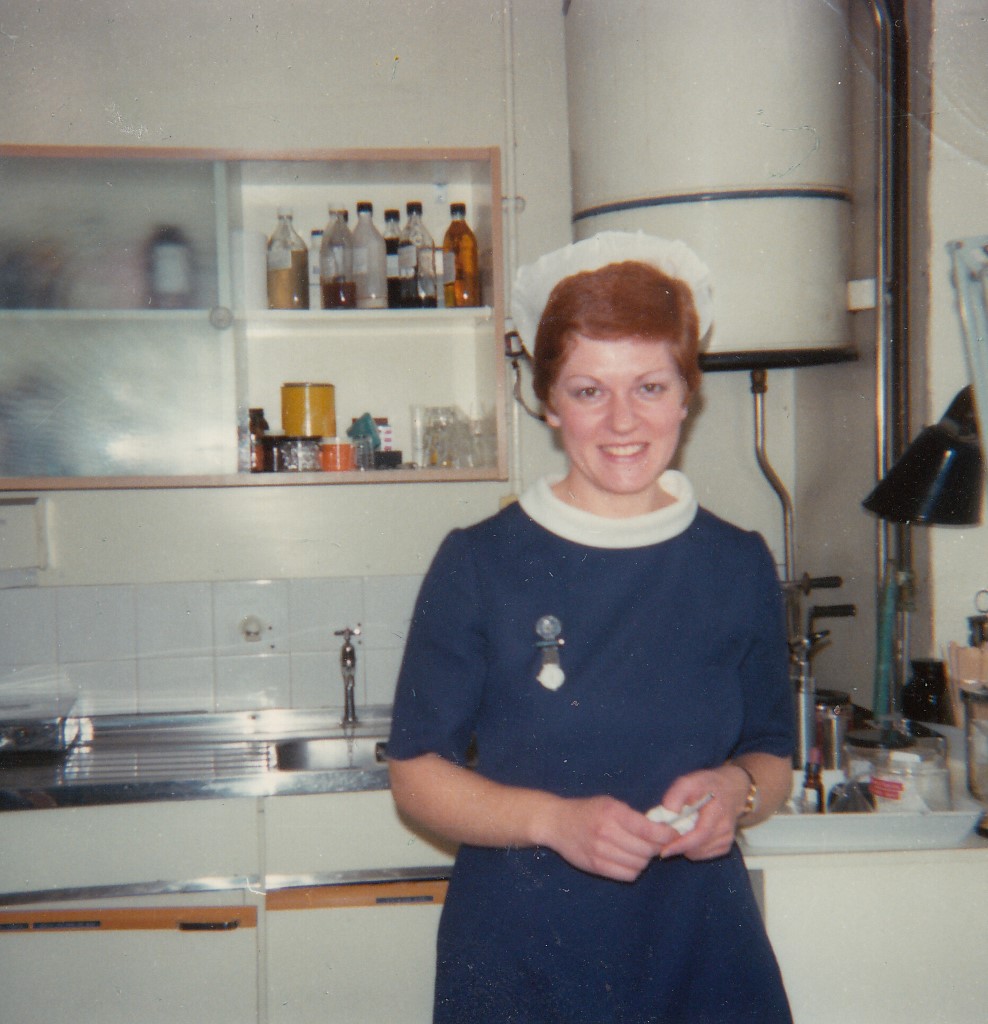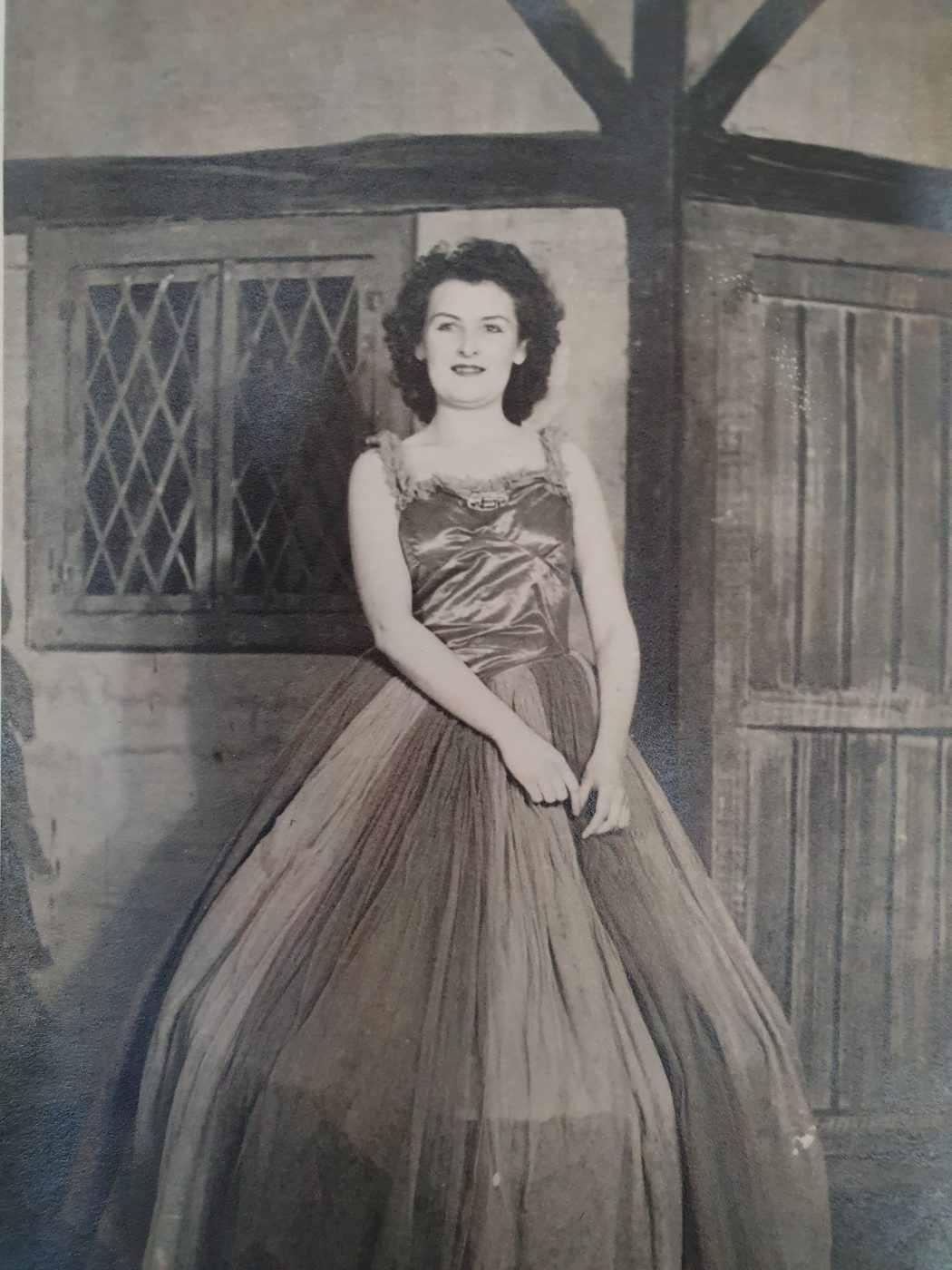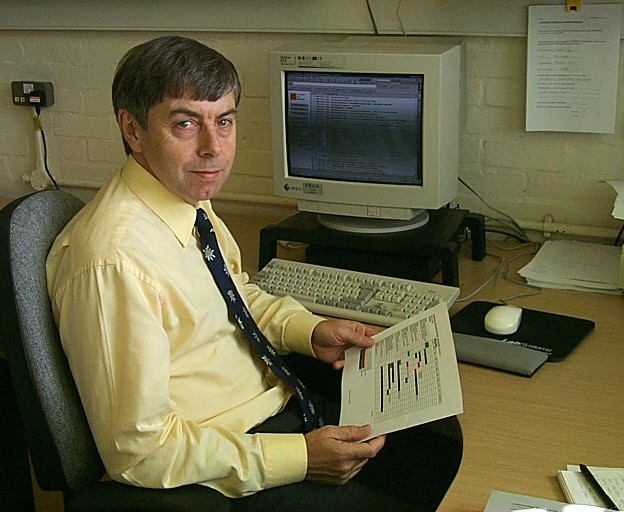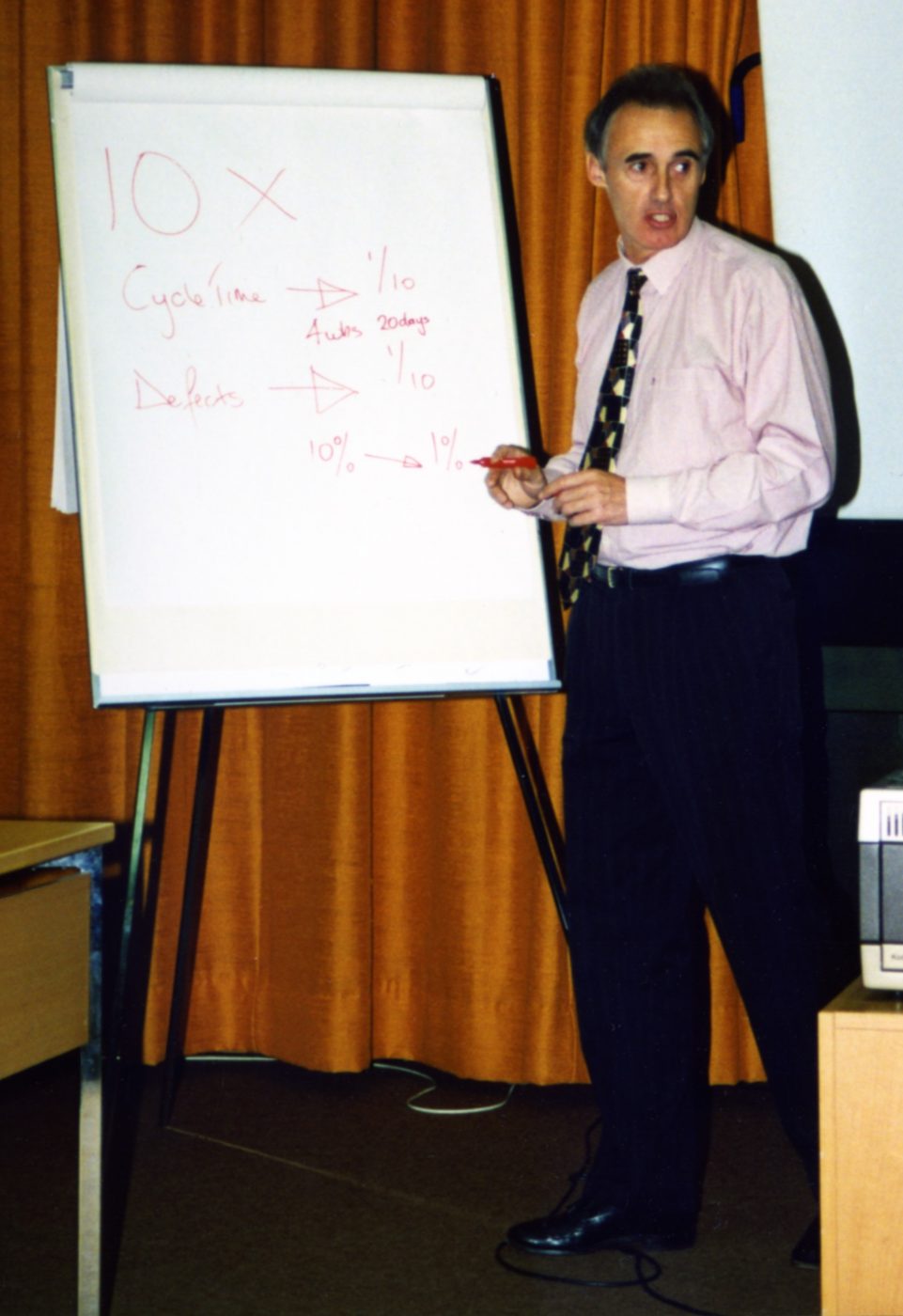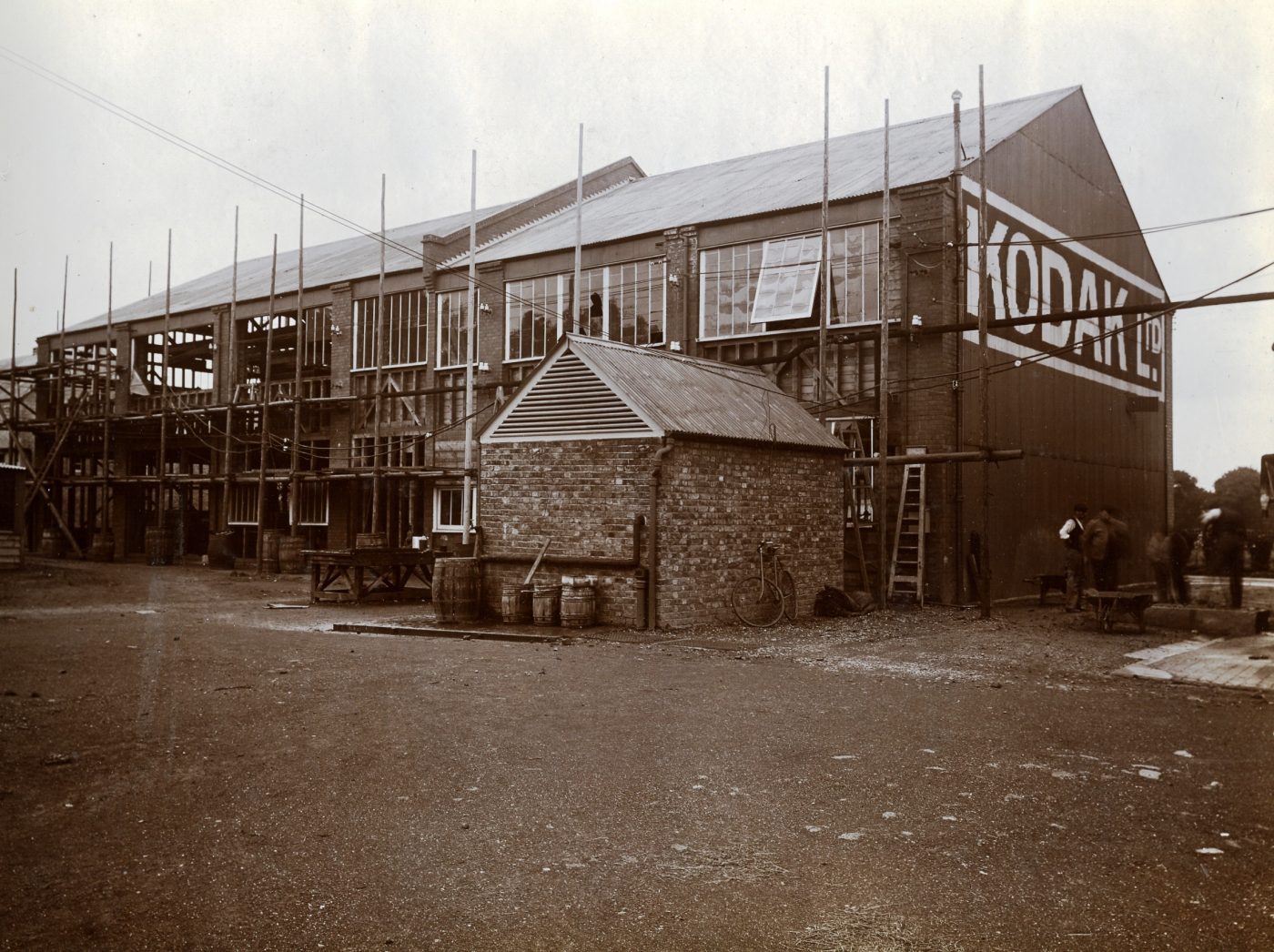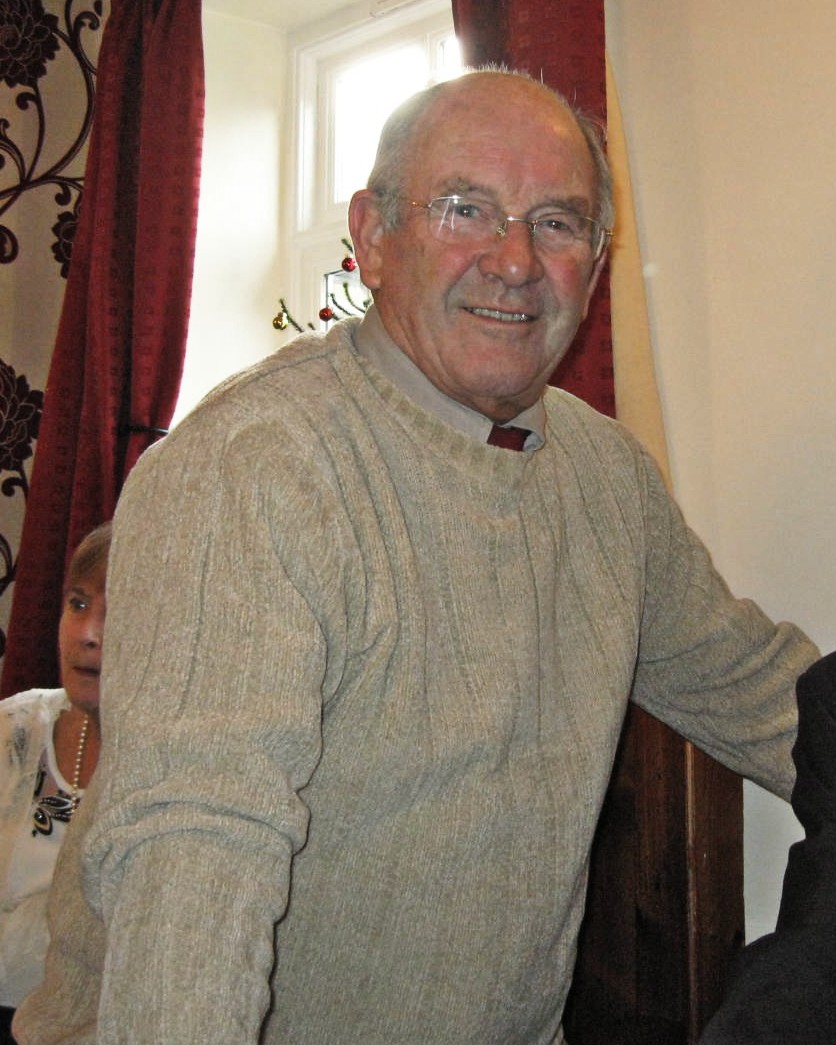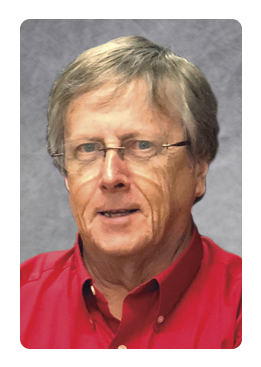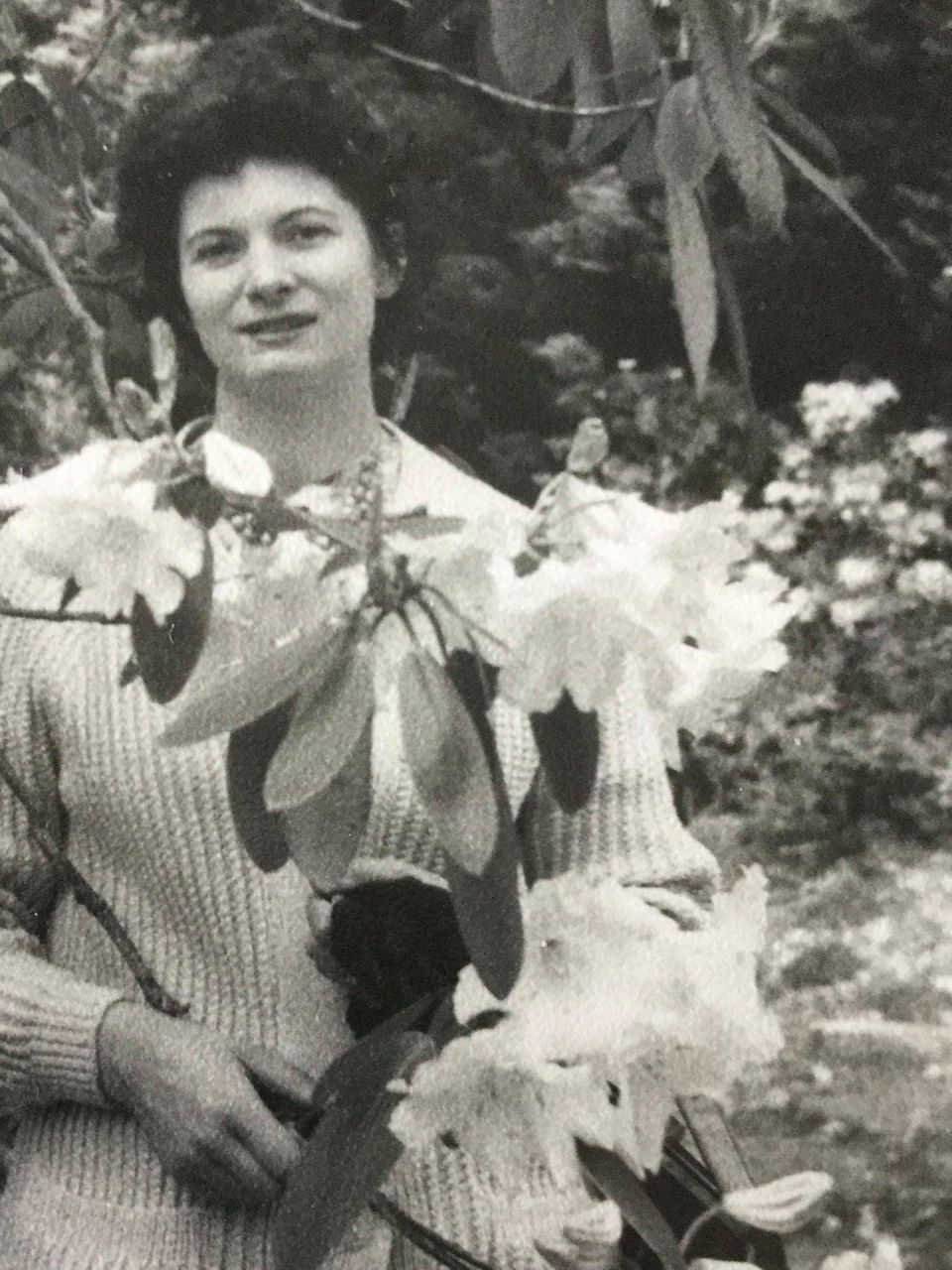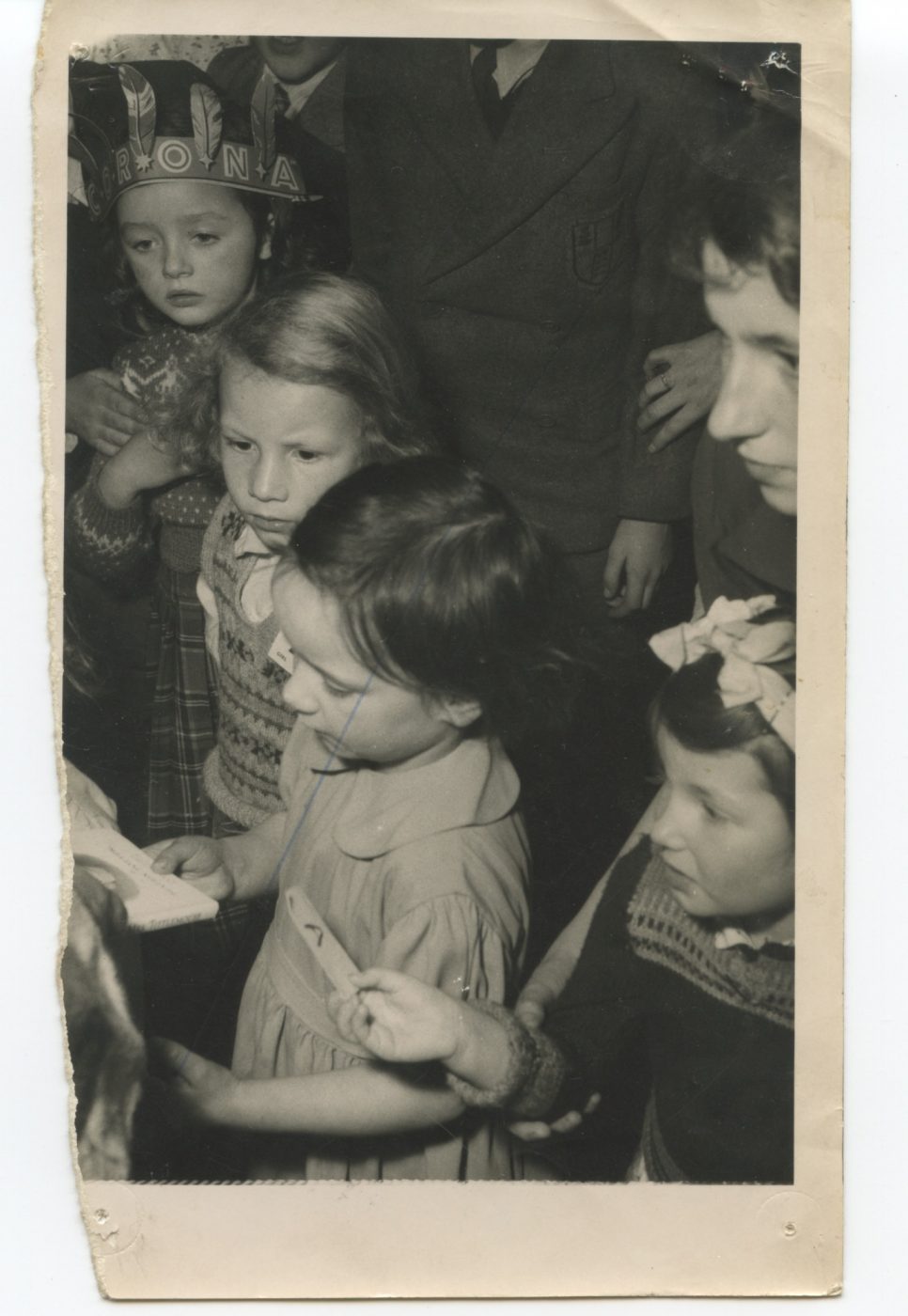Kodak in Harrow: Celebrating 130 Years
To celebrate the 130th anniversary since the Kodak factory opened its doors in Harrow, we’re excited to launch a digital exhibition showcasing its history as well as the many faces of the people who worked there.
Through oral histories and memories, this exhibition will highlight historic moments in Kodak’s history in Harrow. A film has been created especially for this exhibition to mark the anniversary.
This exhibition is best viewed on a computer or tablet screen
History of Kodak in Harrow
The Kodak factory was established in 1891 on a seven-acre greenfield site, just to the west of the Harrow & Wealdstone railway line. It was a major employer in the area and by the 1950s the site covered 55 acres and employed around 6,000 people. In its early days it developed and printed photographs, and produced film-roll, to cater to the mass expansion of photography as a popular pastime.
It had its own research laboratory by 1929, and was always seeking to innovate and develop, in line with the entrepreneurial spirit of its founder, the US inventor and businessman, George Eastman. But Kodak could not keep pace with the digital age, and a period of decline ended with its closure in 2017. Now all that remains is the Eastman name, the iconic chimney, and the memories of those who worked there.
Work Life
The Kodak site in Harrow was a factory and as such it comprised the range of department necessary to produce its products including Research & Development, Manufacturing producing Kodak film and photographic paper, Engineering, Product Evaluation and Marketing as well as a Logistics department for moving materials within the factory, between departments and round the wider “Kodak World”.
In order to operate these departments Kodak recruited employees with skills ranging from raw 6th form students seeking holiday jobs, young people seeking apprenticeships through to PhD student fresh from completing their doctorate studies. These new recruits joined the existing workforce and quickly became part of the wider Kodak “family”.
Home Life
Reflecting social trends of the time, up until around the 1970s, if not benefitting from the excellent transport links from the edges of Metroland, most people lived close to work, and so Harrow was, as described by one former employee, a “Kodak community.”[1] Kodak employees living in Harrow often found that their next-door neighbours were colleagues – or even their bosses. It was also not uncommon for multiple generations of the same family to work at Kodak.
By the early 1970s, the ‘Kodak hooter’ – a sound that beckoned Kodak Factory workers from their homes in the morning – had fallen silent, but for those who lived in Harrow before this time it evokes strong memories.
[1] Dennis Locke [2] Carole Cummings
Social Life
Kodak was such a large company and infrastructure in Harrow that a social life was always present. With so many people in the area working at the company they didn’t have to go far to meet up with friends for a drink or enjoy sports on the kodak playing fields next to the site. Sports played a big part of social life for the Kodak employees, ranging from golf, to tennis the company even had their own Football team, Kodak F.C.
However, sports were not the only activities and events run by Kodak. There was a very strong social environment throughout the company, and employees could always find something to enjoy or get involved in whether that be music in the folk club or the Kodak band, pantos in the theatre club as well as opportunities for celebrating together at different parties throughout the year.
Kodak In Harrow Film
Film created by Marianna Michael on behalf of Headstone Manor & Museum. Funded by NHLF. Additional content taken from the oral histories carried out in 2021 will be on our website in due course.
Oral History Interviewees
Dennis Lock
Dennis joined Kodak at Harrow in October 1974 as part of the graduate intake, after completing a PhD in theoretical physics. He worked in the research lab to begin with, specialising in phototype setting papers and later Kodacolour film. In the late 1980s he moved to Kodak in France to oversee the transfer of part of the production process. On return to Harrow, he managed the testing department, then in the late 1990s, he became a product manager, following a spell in Rochester, New York. Later Dennis was posted to China to manage a new state of the art production site. Finally he retired from Kodak as manufacturing director in October 2007.
Derek Tomlin
Derek worked for Kodak from August 1965 to January 1971 as an apprentice instrument mechanic, then technician apprentice, attending the Kodak apprentice training school, then being sponsored by Kodak to acquire ONC and HNC (Ordinary and Higher National Certificates) in engineering. Once qualified, Derek worked as an instrument engineer in the film sensitisation department. He played cricket for Kodak cricket club. Numerous members of his family also worked for Kodak, including his grandfather, father and uncle. Derek left Kodak to pursue a career in engineering, moving to Joe Lyons, the food manufacturer, in Greenford.
Carole and Jayne
Carole worked as a nurse at the Kodak occupational health centre between 1975-77, as well as having school holiday jobs there. Her sister, Jayne, worked in the PR department at Hemel Hempstead, 1977-81. Their father also worked at Kodak for around 40 years, rising to become manager of the area 2 film finishing department and also involved in setting up the employee benefits department, retiring in 1977. Their grandfather also worked at Kodak as a bookbinder. Both Carole and Jayne attended Kodak Christmas parties as children, their father attended dinner dances and had an interest in sailing (Kodak had its own yacht at Lymington). Their grandfather was heavily involved in the athletics and shooting clubs at Kodak.
Joan Florence Shacklady (née Joan Cork)
Joan started working for Kodak at the age of fifteen in 1940; she left school when the war started and was working for an insurance company when she heard from a friend that she could earn double at Kodak. Joan started her time with the company sifting through negatives and rolls of film, checking for defects, but soon moved to the Personnel department, where duties included issuing security passes for the site, and helping set up new starters. Whilst at Kodak, Joan enjoyed taking part in company pantomimes and musical performances as a chorus girl. In 1958, she left Kodak to become a housewife.
John Trigg
John started working for Kodak in 1965; he worked for Kodak for about 40 years in the R&D (research and development) laboratories, and held the job title “I S business support manager for European R&D”. He worked with a team of around 500 at the start but it went down to about 30 before the site closed in 2005. After leaving Kodak he set up his own consultancy company in laboratory informatics.
Mike Katz
Mike started working for Kodak in 1973. He worked at Kodak for a little over 35 years, and all except 2 of those were at Harrow. He had a number of very different roles during that period, including 10 years directly associated with manufacturing. Mike was also involved with new product evaluation/customer troubleshooting, supply chain planning, logistics and process/people improvement programs. After Kodak Mike became a chemistry technician at Nower Hill High School, Pinner.
Michael Beech
Michael started working for Kodak in 1968 at twenty-three; he had just married, bought a house, and had a baby on the way, so in addition to fulfilling an interest in photography, the salary at Kodak was a major draw. For the first five years, he worked as a shift technician, commuting from Hemel Hempstead, before coming off of shift work in 1973 and moving to Pinner to be closer to the site. He moved into various management positions throughout his thirty-two-year career at Kodak; whilst always based at Harrow, he had the opportunity to work in locations including Madrid and Milan, and Annesley.
John Bright
John started working at Kodak in 1988. He worked shifts on the factory floor on the production line. John worked on different areas of the line, sharing the work between a team of 9. These jobs included unpacking, moving and storing large rolls of photographic paper, making up chemicals for the machines, such as inks, or working on the machine itself. John left in 2006 after the site closed and became a school technician.
Tony Kaye
Anthony Larry (Tony) Kaye was born in 1953. He joined Kodak in September 1978 having gained a PhD at University. After five years (1983) he was sent to the Eastman Kodak facility in Rochester, New York state. Within a year or so of returning to Kodak Harrow he was the Quality Leader, responsible for all Kodak’s film sold in Europe, Africa and the Middle East. For most of his career Tony says his function was to act as an interface between Manufacturing, Marketing and Research & Development. He left Kodak in September 2006 when “digital was eroding the sales volume of film”.
Stories from other Kodak Employees
John Cox
“I joined Kodak in October 1956 and worked in the film emulsion department. I remembered during the war my late father telling me of a landmine that was hanging from a tree in or near the sports ground. I spent many a happy Saturday evenings dancing in the [Kodak] hall. I enjoyed every day I worked there retired in 1985.”
Trevor Hardy
“My late father, Reginald Hardy, worked there from the age of 16 until the mid-late 80s. He was a very keen cinematographer, member of the rugby club to mention just a few of the activities. As you can imagine working somewhere as Kodak he shot (and no doubt collected) many hours of 8mm and 16mm films. I have been able to project a couple of these and have put the links below Kodak Inter-departmental 7s September 1967 & Wealdstone Bridge Removal “
Alan Lowne
Linden Williams
Yvonne Clark
“I worked for Kodak from 1974 to 1993, most of those years at the Harrow factory. I started in the Paper Support Department as a Resin Coating Machine Assistant Planner, and then successfully applied for promotion to be a Senior Planner. After that I transferred to a planning job in Paper Finishing, and then in Paper Sensitizing. There followed a break, when I worked in the Merchandising Department at Ruislip but then came back to Harrow to work in Site Control. During this time, Capital Radio came to the factory to broadcast Graham Deane’s programme during lunchtime, on Monday 5th October 1987 & I took part!”
John Marriage
“My late father, Anthony Marriage, worked at the Research Labs in Wealdstone from about 1930 – 1970. I don’t have a lot of material, and he never talked much about work when at home, but I think I have a few photos of people, and when he retired there was a kind of booklet with dozens of signatures which I have, somewhere.”
Image: Picture of the family in about 1957. My father Anthony Marriage worked at Kodak, and I’m the oldest of the children.
Mavis Tilbury
Bill Noble
Bill Noble remembers the factory Hooter sound at 7.55am and again at 8am. After studying at night school, Bill gained extra responsibilities and experiences at Kodak, changing departments and culminating in his promotion as Supervisor for a Planning Section and Materials Supply group in the Paper Finishing Department.
Gallery
Acknowledgements
Kodak 2021 Project Volunteers
This digital exhibition would not have happened without our four dedicated volunteers. Thank you for all your support! This includes; Kirsten Chaplin, Gavin Eynon, Howard Greenwood and, Christina Lewis
Kodak 2021 Project Oral History Interviewees
With thanks to: Derek Tomlin, Dennis Lock, Carole & Jayne, Tony Kaye, Joan Shacklady (with thanks to Robin Shacklady), Michael Beech, John Trigg, Mike Katz and, John Bright
Other Acknowledgements
With thanks to; Dr Michael Pritchard – Royal Photographic Society and, Marianna Michael – Video & Sound Editor
Do you have a story to share about Kodak in Harrow?
If so, email your story to collections@headstonemanor.org


